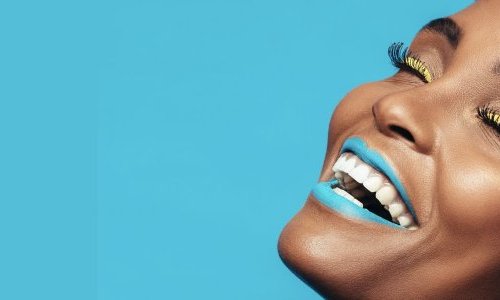
Mathieu Hébert
Premium Beauty News – Could you describe the innovation potential associated with optics and the study of coloured surfaces?
Mathieu Hebert - At Institut d’Optique, we focus on products with a visual functionality and on their appearance. We endeavour to describe and understand perception attributes with physical or mathematical models describing colours, shine, textures, or transparency. We explore how light is reflected by the material with macroscopic approaches. For example, we are among the first in the world to have studied prints seen not only through reflectance, but also through light transmittance, which was what I focused on for my 2006 thesis at the Federal Polytechnic School of Lausanne, Switzerland. It also led to several publications. [1]
This work is aimed to enhance the control of appearance, but also to invent new visual effects. It represents a strong innovation potential. Appearance is a deep societal concern: Man tries to optimize His own visual quality and that of His products.
Premium Beauty News - Which measuring instruments do you use?
Mathieu Hébert - We use standard measuring instruments like spectrophotometers, gonio-spectrophotometers, spectral imagery, polarized imagery, but also cameras. With our engineering and Master’s students, we can develop specific devices, for example to evaluate the translucency of a 3D printing material.
Our work is based on measurement, modelling, and prediction, and we favour measuring methods that are easy to use, as well as the simplest mathematical models, so they can subsequently be used in the industry. As an example, in the field of printing, instead of measuring a broad sample of over 2,700 colours on a given material, as the best printing houses still do, mathematical models only measure a small sample of about forty printed colours and predict all the others. This is a strong advantage when you have to repeat the operation for another material.
Premium Beauty News - What are the specificities of cosmetics?
Mathieu Hebert - Visual functionalities are essential in the field of cosmetics, and it is based on very specific materials.
For example, our hair is not a flat surface. Also, it does not have only one colour, but a mosaic of narrow coloured areas. Its small scales produce different reflections, one of which is produced on the scale surface and provides the sensation of shininess. The other is produced inside the scales and is usually coloured due to interferential effects. The regularity of the scales has much influence on these reflections, i.e. on our perception of our hair condition.
As for the skin, it is a living, translucent, rather heterogeneous material. It can only be studied in reflectance, because it is not possible to position any instrument behind it, contrary to what can be done with paper or textile. Its translucency, in particular as regards red light, also makes it difficult to make measurements, since most spectrophotometers are not adapted to translucent surfaces. That is when spectral imagery represents a good alternative, although it is still a laboratory instrument.
Premium Beauty News - What issues do you study for the field of cosmetics?
Mathieu Hebert - We have been working on predicting the colour of skins wearing makeup, knowing the characteristics of the bare skin and the makeup applied beforehand. We also follow up the evolution of colours over time. In partnership with the Lyon-based Newtone Technologies company and the Hospital of Saint-Étienne, we have been directing a thesis on the 3D spectral imagery of the face, which actually got the best paper prize at the San Francisco Material Appearance conference in February 2018.




























